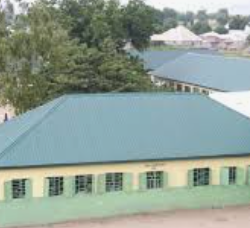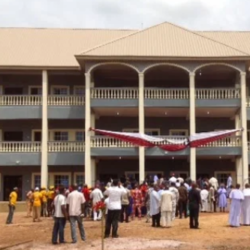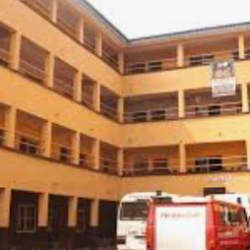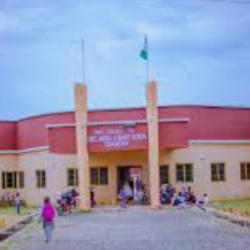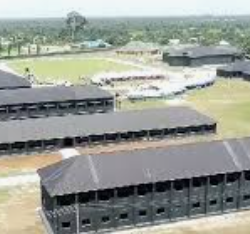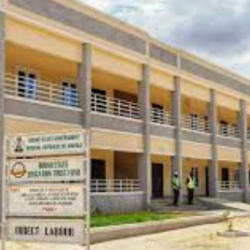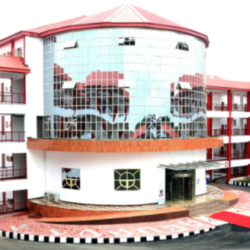Uganda’s administrative classification into regions, sub-regions, and districts reflects the country’s diversity: administratively, culturally and geographically.
Classification of Uganda into districts and subregions
Kampala
Kampala
Buganda
South
Bukomansimbi Butambala
Gomba
Kalangala
Kalungu
Kyotera
Lwengo
Lyantonde
Masaka
Masaka City
Mpigi
Rakai
Sembabule
Wakiso
Buganda
North
Buikwe
Buvuma
Kassanda
Kayunga
Kiboga
Kyankwanzi
Luwero
Mityana
Mubende
Mukono
Nakaseke
Nakasongola
Busoga
Bugiri
Bugweri
Buyende
Iganga
Jinja
Jinja City
Kaliro
Kamuli
Luuka
Mayuge
Namayingo
Namutumba
Bukedi
Budaka
Busia
Butaleja
Butebo
Kibuku
Pallisa
Tororo
Elgon
Bududa
Bukwo
Bulambuli
Kapchorwa
Kween
Manafwa
Mbale
Mbale City
Namisindwa
Sironko
Teso
Amuria
Bukedea
Kaberamaido
Kalaki
Kapelebyong
Katakwi
Kumi
Ngora
Serere
Soroti
Soroti City
Karamoja
Abim
Amudat
Kaabong
Karenga
Kotido
Moroto
Nabilatuk
Nakapiripirit
Napak
Lango
Alebtong
Amolatar
Apac
Dokolo
Kole
Kwania
Lira
Lira City
Otuke
Oyam
Acholi
Agago
Amuru
Gulu
Gulu City
Kitgum
Lamwo
Nwoya
Omoro
Pader
West-Nile
Adjumani
Arua
Arua City
Koboko
Madi-Okollo
Maracha
Moyo
Nebbi
Obongi
Pakwach
Terego
Yumbe
Zombo
Bunyoro
Buliisa
Hoima
Hoima City
Kagadi
Kakumiro
Kibaale
Kikuube
Kiryandongo
Masindi
Toro
Bundibugyo Bunyangabu
Fort Portal City
Kabarole
Kamwenge
Kasese
Kitagwenda
Kyegegwa
Kyenjojo
Ntoroko
Ankole
Buhweju
Bushenyi
Ibanda
Isingiro
Kazo
Kiruhura
Mbarara
Mbarara City
Mitooma
Ntungamo
Rubirizi
Rwampara
Sheema
Kigezi
Kabale
Kanungu
Kisoro
Rubanda
Rukiga
Rukungiri
Uganda, the Pearl of Africa, is not only rich in biodiversity and culture but also boasts a comprehensive administrative structure that reflects its commitment to decentralization and local governance. With over 135 districts spread across four main regions and multiple sub-regions, Uganda has effectively established one of the most detailed governance frameworks in East Africa. This article offers a complete breakdown of Uganda’s administrative hierarchy, from the national level down to individual districts and newly established cities.
Understanding Uganda’s Administrative Framework
Uganda’s administrative system is designed to decentralize governance and bring services closer to the people. This framework is rooted in the 1995 Constitution of Uganda and enhanced by the Local Government Act, which enables local governments to operate with relative autonomy under the central government’s supervision.
Each district is headed by a District Chairperson, supported by elected councilors and technical staff. These districts are further subdivided into counties, sub-counties, parishes, and villages, ensuring that governance and development are delivered even at grassroots levels.
The country is primarily categorized into:
- 4 Major Regions (Central, Eastern, Northern, Western)
- 15+ Sub-Regions
- 135+ Districts and Cities
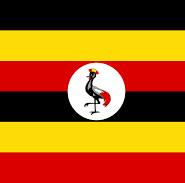
Uganda’s Major Administrative Regions
Central Region
The Central Region is Uganda’s economic heartland and home to the nation’s capital, Kampala. This region encompasses both urban and rural areas, with rapid infrastructure development and industrial growth. It is predominantly occupied by the Baganda ethnic group and hosts vital institutions like the Buganda Kingdom and Kampala Capital City Authority (KCCA).
Kampala Sub-region
- Districts/Cities: Kampala
- Kampala functions as both a city and a district. It’s Uganda’s administrative, commercial, and communication center.
Buganda South Sub-region
- Districts: Bukomansimbi, Butambala, Gomba, Kalangala, Kalungu, Kyotera, Lwengo, Lyantonde, Masaka, Masaka City, Mpigi, Rakai, Sembabule, Wakiso
- Wakiso surrounds Kampala and has grown rapidly due to urban sprawl.
Buganda North Sub-region
- Districts: Buikwe, Buvuma, Kassanda, Kayunga, Kiboga, Kyankwanzi, Luwero, Mityana, Mubende, Mukono, Nakaseke, Nakasongola
- Mukono and Buikwe are among the fastest developing districts due to their proximity to Kampala.
Eastern Region
The Eastern Region spans from the Mount Elgon ranges to the banks of Lake Kyoga, rich in agriculture and fisheries. It includes several sub-regions with distinct cultural and linguistic groups.
Busoga Sub-region
- Districts/Cities: Bugiri, Bugweri, Buyende, Iganga, Jinja, Jinja City, Kaliro, Kamuli, Luuka, Mayuge, Namayingo, Namutumba
- Jinja, located along the Nile, is a key industrial and tourism center.
Bukedi Sub-region
- Districts: Budaka, Busia, Butaleja, Butebo, Kibuku, Pallisa, Tororo
- Tororo is a significant border town with Kenya.
Elgon Sub-region
- Districts/Cities: Bududa, Bukwo, Bulambuli, Kapchorwa, Kween, Manafwa, Mbale, Mbale City, Namisindwa, Sironko
- Mbale and Kapchorwa are known for coffee and high-altitude agriculture.
Teso Sub-region
- Districts/Cities: Amuria, Bukedea, Kaberamaido, Kalaki, Kapelebyong, Katakwi, Kumi, Ngora, Serere, Soroti, Soroti City
- The Iteso people dominate this area, with Soroti emerging as a central urban hub.
Northern Region
Northern Uganda is rich in culture, history, and post-conflict recovery initiatives. It’s comprised of several sub-regions, each with distinct ethnic communities and development challenges.
Karamoja Sub-region
- Districts: Abim, Amudat, Kaabong, Karenga, Kotido, Moroto, Nabilatuk, Nakapiripirit, Napak
- Known for its nomadic pastoral lifestyle and mineral wealth.
Lango Sub-region
- Districts/Cities: Alebtong, Amolatar, Apac, Dokolo, Kole, Kwania, Lira, Lira City, Otuke, Oyam
- Lira is a key urban and trade center for northern Uganda.
Acholi Sub-region
- Districts/Cities: Agago, Amuru, Gulu, Gulu City, Kitgum, Lamwo, Nwoya, Omoro, Pader
- Gulu City is central to Acholi cultural heritage and was a focal point during Uganda’s conflict years.
West-Nile Sub-region
- Districts: Adjumani, Arua, Arua City, Koboko, Madi-Okollo, Maracha, Moyo, Nebbi, Obongi, Pakwach, Terego, Yumbe, Zombo
- Culturally diverse and strategically located near the DRC and South Sudan borders.
Western Region
This region is geographically diverse, encompassing highlands, valleys, and lakes. It is one of Uganda’s most agriculturally productive and culturally vibrant areas.
Bunyoro Sub-region
- Districts/Cities: Buliisa, Hoima, Hoima City, Kagadi, Kakumiro, Kibaale, Kikuube, Kiryandongo, Masindi
- Home to oil-rich basins and the ancient Bunyoro Kingdom.
Toro Sub-region
- Districts/Cities: Bundibugyo, Bunyangabu, Fort Portal City, Kabarole, Kamwenge, Kasese, Kitagwenda, Kyegegwa, Kyenjojo, Ntoroko
- Fort Portal City is known for tourism and scenic beauty.
Ankole Sub-region
- Districts/Cities: Buhweju, Bushenyi, Ibanda, Isingiro, Kazo, Kiruhura, Mbarara, Mbarara City, Mitooma, Ntungamo, Rubirizi, Rwampara, Sheema
- Ankole is famous for long-horned cattle and dairy farming.
Kigezi Sub-region
- Districts: Kabale, Kanungu, Kisoro, Rubanda, Rukiga, Rukungiri
- Characterized by terraced farming and mountainous terrain.
| Region | Sub-Region | Districts / Cities |
|---|---|---|
| Central | Kampala | Kampala |
| Buganda South | Bukomansimbi, Butambala, Gomba, Kalangala, Kalungu, Kyotera, Lwengo, Lyantonde, Masaka, Masaka City, Mpigi, Rakai, Sembabule, Wakiso | |
| Buganda North | Buikwe, Buvuma, Kassanda, Kayunga, Kiboga, Kyankwanzi, Luwero, Mityana, Mubende, Mukono, Nakaseke, Nakasongola | |
| Eastern | Busoga | Bugiri, Bugweri, Buyende, Iganga, Jinja, Jinja City, Kaliro, Kamuli, Luuka, Mayuge, Namayingo, Namutumba |
| Bukedi | Budaka, Busia, Butaleja, Butebo, Kibuku, Pallisa, Tororo | |
| Elgon | Bududa, Bukwo, Bulambuli, Kapchorwa, Kween, Manafwa, Mbale, Mbale City, Namisindwa, Sironko | |
| Teso | Amuria, Bukedea, Kaberamaido, Kalaki, Kapelebyong, Katakwi, Kumi, Ngora, Serere, Soroti, Soroti City | |
| Northern | Karamoja | Abim, Amudat, Kaabong, Karenga, Kotido, Moroto, Nabilatuk, Nakapiripirit, Napak |
| Lango | Alebtong, Amolatar, Apac, Dokolo, Kole, Kwania, Lira, Lira City, Otuke, Oyam | |
| Acholi | Agago, Amuru, Gulu, Gulu City, Kitgum, Lamwo, Nwoya, Omoro, Pader | |
| West-Nile | Adjumani, Arua, Arua City, Koboko, Madi-Okollo, Maracha, Moyo, Nebbi, Obongi, Pakwach, Terego, Yumbe, Zombo | |
| Western | Bunyoro | Buliisa, Hoima, Hoima City, Kagadi, Kakumiro, Kibaale, Kikuube, Kiryandongo, Masindi |
| Toro | Bundibugyo, Bunyangabu, Fort Portal City, Kabarole, Kamwenge, Kasese, Kitagwenda, Kyegegwa, Kyenjojo, Ntoroko | |
| Ankole | Buhweju, Bushenyi, Ibanda, Isingiro, Kazo, Kiruhura, Mbarara, Mbarara City, Mitooma, Ntungamo, Rubirizi, Rwampara, Sheema | |
| Kigezi | Kabale, Kanungu, Kisoro, Rubanda, Rukiga, Rukungiri |
1. How many districts are there in Uganda
Uganda currently has over 135 districts and cities, with new ones occasionally being created for better governance and accessibility.
2. What is the largest region in Uganda?
Northern Uganda is geographically the largest, while the Central Region is the most populated and economically active.
3. Why does Uganda have so many districts?
To enhance service delivery, decentralize governance, and bring government services closer to the people, especially in rural and marginalized areas.
4. What are the newest cities in Uganda?
Recent cities include Soroti City, Lira City, Fort Portal City, and Hoima City, among others.
5. Is Kampala a district or a city?
Kampala is both a district and a city, governed by the Kampala Capital City Authority (KCCA).
6. What role do sub-regions play in Uganda?
Sub-regions group together districts that share similar ethnic, cultural, or historical backgrounds. They are key for regional planning and political representation.
